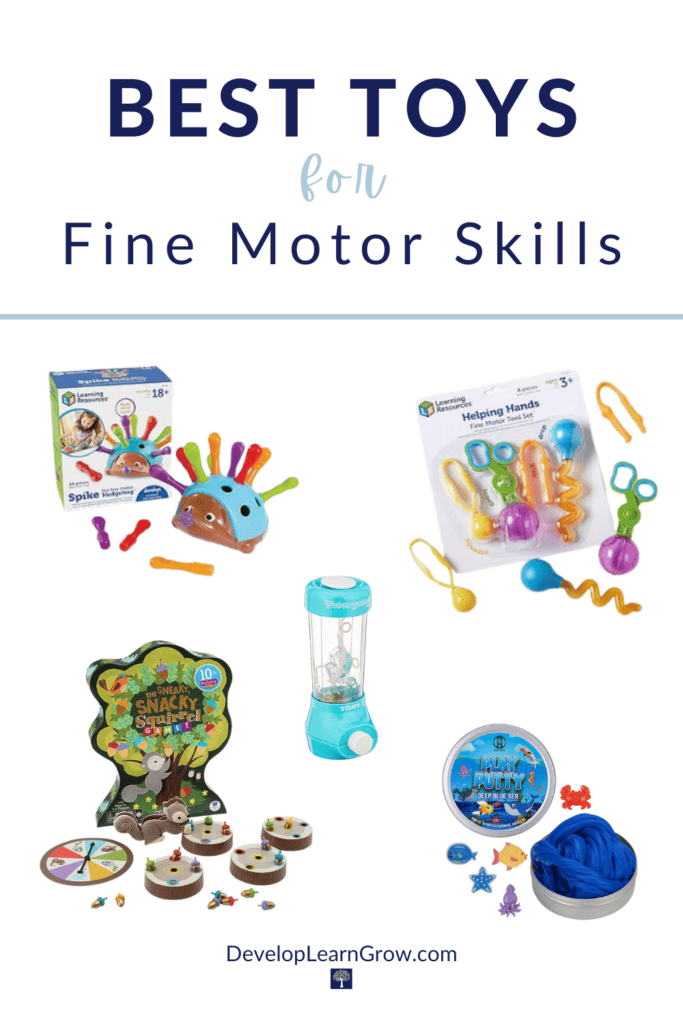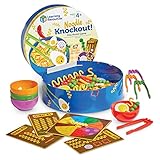Play is a great way to build fine motor development in young children. Check out these occupational therapist’s recommendations of 93 of the best toys for fine motor skills. The toys are divided into 6 different skill areas to help improve fine motor development skills.
Many parents and educators have been seeking my help for ideas to help with fine motor skill development. So many kids are struggling to complete basic fine motor tasks at home and in school.
I continue to see significant declines in fine motor development in many kids. Not just the kids that I need to support as a pediatric occupational therapist. But in ALL KIDS.
Changes in play activities and decreased gross motor play impacts fine motor development.
Teachers are seeing the significant impact on young children in kindergarten and first grade as well as in older kids.
Some teachers are sadly saying, “This is our new norm!”
But there’s such an easy fix! Play is the work of the child. So many learning, sensory, and motor skills are addressed during play activities.
Best Toys for Fine Motor Skills in Kids – 6 Categories, 93 Great Options
As an occupational therapist, I’ve helped parents and educators for decades find toys that help with motor skills.
I’m excited to share a list of some great tools, toys and games for fine motor skill development.
Instead of making 6 different posts, I separated them by skill level so that you can find what you need, all in one area!
I’ve organized this list of fine motor skills toys into 6 different categories of hand skills. My occupational therapy picks support the development of the fine motor skills listed below. Click on each skill area to jump right to that category in this list:
- Shoulder Stability and Grading of Movements
- Bilateral Coordination
- Hand Strength
- Grasp Development
- Dexterity (precise movements of the fingers)
- Sensory Motor Development
[This post contains Amazon affiliate links for your convenience. See below for more info.]
Toys are such a great way to work on fine motor development. Kids don’t realize they’re building skills when they play in different ways!
Toys, games, and occupational therapy activities are the easiest way to build a child’s fine motor skills. Young children and older kids can naturally build fine motor skill development through play. Toys and games stimulate hand eye coordination, visual perceptual skills, and problem-solving skills.
1) Best Toys for Shoulder Stability and Grading of Hand Movements
A child needs good core strength to support fine motor skill development (click the link for core exercises.) Core stability supports good posture and shoulder stability for proper fine motor skill development.
Younger kids and older children currently really struggle to have good posture and stability. I see it in many of the schools where I work.
The window clings and magnets can be used at vertical surfaces such as an easel, window, door, or a wall.
Vertical activities are great for shoulder stability as well as stacking games and toys. In addition, grading of movements are important skills when manipulating different types of toys. There are lots of fun ways to work on these skills during play and learning.
2) Bilateral Coordination Games and Toys for Fine Motor Practice
It’s important to find kid toys that encourage the use of both hands to work together (bilateral coordination.) Kids develop hand dominance – one hand does the work and the other hand helps to hold and assist. These toys also work on hand eye coordination, which supports skills needed for writing, cutting and daily self-help tasks.
These are the best toys that I like to use an occupational therapy sessions for bilateral coordination .
3) Best Toys to Build Hand Strength in Kids
Hand strength is important for fine motor skill development. Lack of hand strength is a big problem that I see in young kids as an occupational therapist.
Little hands are not participating in as many hand strengthening activities which decreases the development of fine motor muscles. Decreased gross motor activities, fewer hands-on activities, increased screen time, and decreased outdoor play negatively impact fine motor skill development.
Many kids lack the proper skills to hold drawing tools, to open containers, to manage fasteners and to use scissors.
There are tons of great ways to work on strengthening the hand muscles and fine motor control through play.
A baby’s fine motor skills are dependent on opportunities for proper play experiences using the best fine motor toys. The use of bouncers and saucers should be limited and floor time play or seated play should be encouraged.
For younger children, it’s important to focus on toys that keep the thumb opposite the other fingers. Ones that are palm sized or a little larger are a great way to work on the little muscles that support the palmar arches of the hands.
In older kids, I continue to find toys that focus on strengthening the thumb.
Some of the building toys listed improve strength but also stimulate creativity. Check out these fun hand strengthening toys.
4) Games and Best Toys for Grasp Development in Kids
Many of these next toys also focus on hand strength within the thumb and palm. However, they also incorporate pincer grasp development and skill finger development.
A pincer grasp involves the thumb and the tip of the index finger. This significantly supports pencil grasp development.
The skill fingers are the thumb, index, and middle fingers. They are the working fingers of the hand that should be used during grasping and manipulating of small objects.
Hammering games are good to help develop hand dominance.
Fore more information, review Pencil Grasp Development- 5 Ways to Help Develop Fine Motor Skills and 107+ Hand Strengthening Activities and Games for Kids.
The following list contains my favorite OT toys for grasp development that are so much fun. Kids don’t realize they’re exercising their hands and working on grasp development!
5) Best Toys to Work on Hand Dexterity and Finger Control
Hand dexterity and in-hand manipulation skills are important for fine motor development. The small muscles of the hand need to be able to move objects within the palm and fingertips. These toys and games are also great learning tools. They work on cognitive skills such as problem solving, strategy, and visual perceptual skills.
6) Best Sensory Toys for Sensory Fine Motor Skill Development
Sensory motor development is important for kids. Fine motor skills can be incorporated into tactile sensory play.
It’s important to develop tactile discrimination skills and stereognosis in the hands (telling apart textures, shapes and objects by feeling and not looking.) Additionally, kids need to feel different textures in their hands to enhance the sensory processing abilities within the palm and fingers.

I hope this blog post is helpful for you. Let your kids have fun and make play a part of daily routines. Grab these toys or add them to your Amazon Wish List! Share this list with others who would appreciate the extra guidance from an occupational therapist to find the best fine motor toys and games for kids!
Related content:
- Best Educational Toys and Games for Kids – These toys and games for kids are my favorite ways to work on cognitive skills. It organizes toys and games into three categories 1) visual perception, strategy and problem solving 2) auditory, visual memory, and hand eye coordination, and 3) gross motor, hand eye coordination, and visual motor skills.
- Art Projects and Crafts to Enhance Learning – Work on open-ended play through arts and crafts. Foster creativity, independence and mindfulness during play!
- Skill Building Outdoor Games for Kids – Improve gross motor skills using these games and toys during recess or backyard play.
- Holiday Shopping Guide 2023 – Make sure you’re buying gifts that benefit development!
Amazon affiliate links are used in this blog post using Amazon Product Advertising API. As an Amazon Associate, Develop Learn Grow may earn a small commission from a qualifying purchase or purchases at no extra cost to you. Thank you for supporting the time spent on this site. See full disclaimer and privacy policy for more information.
































































































0 Comments